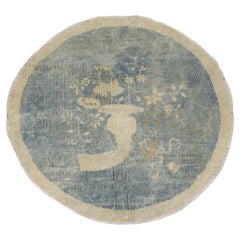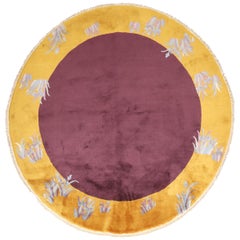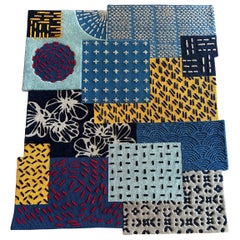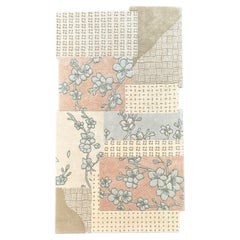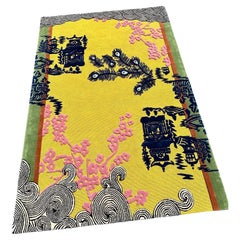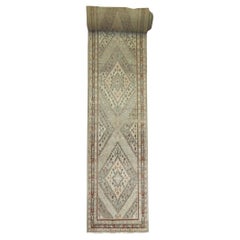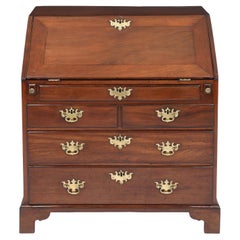Anglo Chinese Furniture
Early 20th Century Chinese Anglo-Indian Chinese and East Asian Rugs
Wool
20th Century Chinese Anglo-Indian Chinese and East Asian Rugs
Wool
Vintage 1940s Chinese Anglo-Japanese Chinese and East Asian Rugs
Wool
2010s Asian Anglo-Japanese Chinese and East Asian Rugs
Wool, Acrylic
2010s Indonesian Anglo-Japanese Chinese and East Asian Rugs
Wool, Acrylic
2010s Indonesian Anglo-Japanese Chinese and East Asian Rugs
Wool, Acrylic
20th Century East Turkestani Anglo-Indian Chinese and East Asian Rugs
Wool
Vintage 1910s East Turkestani Anglo-Japanese Chinese and East Asian Rugs
Wool
Antique Mid-18th Century Chinese George II Desks
Padouk
Antique 19th Century Chinese Dining Room Tables
Marble
Antique Mid-19th Century Chinese Bookcases
Amboyna
Antique Mid-18th Century Chinese Card Tables and Tea Tables
Rosewood
Antique 1840s Blanket Chests
Teak
Antique Early 1900s Chinese Anglo-Japanese Armchairs
Hardwood
Antique 1820s Chinese Card Tables and Tea Tables
Bone, Ebony, Rosewood
Antique 1780s English Tables
Padouk
Antique 1820s Chinese Campaign Commodes and Chests of Drawers
Hardwood
Antique Late 19th Century Chinese Animal Sculptures
Terracotta
Antique 19th Century Chinese Bookcases
Ebony
Mid-20th Century Chinese Mid-Century Modern Desks and Writing Tables
Brass
Vintage 1920s English Anglo-Japanese Vitrines
Mahogany
Antique Mid-19th Century Chinese Campaign Bookcases
Amboyna
Antique 1860s Chinese Chinese Export Furniture
Bone, Boxwood, Teak
Antique Mid-18th Century Chinese Chinese Export Ceramics
Porcelain
Antique 19th Century English Aesthetic Movement Desks
Leather, Bamboo, Lacquer
Antique 19th Century English Chinese Chippendale Shelves
Bamboo, Lacquer
Antique 1830s Chinese William IV Trunks and Luggage
Padouk
Mid-20th Century Chinese Anglo-Japanese Vases and Vessels
Jade
Antique Early 19th Century Chinese Chinese Chippendale Corner Chairs
Elm
Antique Late 19th Century British Chairs
Rosewood
Antique 19th Century Chinese Art Nouveau Tables
Rosewood
Antique Late 19th Century Chinese Wardrobes and Armoires
Brass
Vintage 1980s European Other Chairs
Wood, Cane
Antique 19th Century Chinese Figurative Sculptures
Wood
Mid-20th Century Hong Kong Chinoiserie Dining Room Sets
Upholstery, Teak
Mid-20th Century Chinese Anglo-Japanese Furniture
Wood
Antique 19th Century Chinese Anglo-Indian Figurative Sculptures
Wood, Paint
Late 20th Century Chinese Anglo Raj Urns
Ceramic
Antique Mid-19th Century Chinese Anglo-Indian Desks
Wood
Early 20th Century Japanese Anglo-Japanese Tableware
Ceramic
Early 20th Century Japanese Anglo-Japanese Decorative Baskets
Bamboo, Rattan
Antique Late 19th Century English Anglo-Japanese Cabinets
Rosewood
20th Century Chinese Anglo Raj Console Tables
Bronze
Mid-20th Century Chinese Anglo-Japanese Vases
Paint, Porcelain
Mid-20th Century Chinese Anglo-Japanese Ceramics
Clay
Antique 18th Century and Earlier Chinese Armchairs
Wood
Antique 1820s Chinese Secretaires
Brass
Antique 18th Century and Earlier English Armchairs
Antique Mid-18th Century Chinese Chinese Export Secretaires
Antique Early 19th Century Chinese Secretaires
Wood
Antique Mid-19th Century English Side Tables
Tin
Antique 19th Century Chinese Anglo-Japanese Sculptures
Antique 1860s Japanese Anglo-Japanese Pottery
Ceramic
Vintage 1950s Chinese Anglo Raj Commodes and Chests of Drawers
Antique 1820s Chinese Chinese Export Commodes and Chests of Drawers
Amboyna
20th Century Asian Anglo-Indian Chinese and East Asian Rugs
Antique 19th Century English Wardrobes and Armoires
Antique 1830s Anglo-Indian Armchairs
- 1
Anglo Chinese Furniture For Sale on 1stDibs
How Much is an Anglo Chinese Furniture?
- 1stDibs ExpertJune 15, 2023To care for Chinese lacquered furniture, wipe it with a damp cloth regularly. You can use a paste wax intended for use on lacquer finishes to restore shine, but avoid using harsh furniture polishes and cleaners on pieces. On 1stDibs, shop a range of lacquered furniture.
- 1stDibs ExpertApril 5, 2022Chinese-style furniture is usually called Chinoiserie. The term indicates furniture and decorative objects produced in Europe and North America that borrow design elements from pieces made in China and other East Asian countries. On 1stDibs, find a collection of Chinoiserie.
 PAGODA REDOctober 7, 2020
PAGODA REDOctober 7, 2020To determine the age of a Chinese furniture piece, look carefully at the joinery and finish. Natural expansion and contraction of the wood over time will cause a joint to protrude or retract, distorting a once-seamless fit. Antique lacquer finishes become crackled and worn over time. Areas of exposed wood, such as the underside of a table, the footrest of a chair, or the back of a cabinet should appear raw and dry compared to the finished surface. With use, the legs of tables and chairs become weathered near the bottom from precipitation and use.
- 1stDibs ExpertNovember 4, 2024To identify antique Chinese furniture, look carefully at its details. Chinese craftsmen often built furniture using mortise and tenon joinery, eliminating the need for nails and screws. If you see this type of hardware, your piece is likely not at least 100 years old, especially if the hardware still looks new and shiny. Since antique furniture was handmade, you will normally see slight imperfections, such as tool marks or slight variations in carvings. Pieces that appear completely uniform and pristine are less often genuine antiques.
When present, maker's marks can also be helpful. Research the marks to learn more about when the maker was active and producing pieces like yours. Alternatively, you can have a certified appraiser or experienced antique dealer evaluate your furniture for you.
Shop an assortment of antique Chinese furniture.
